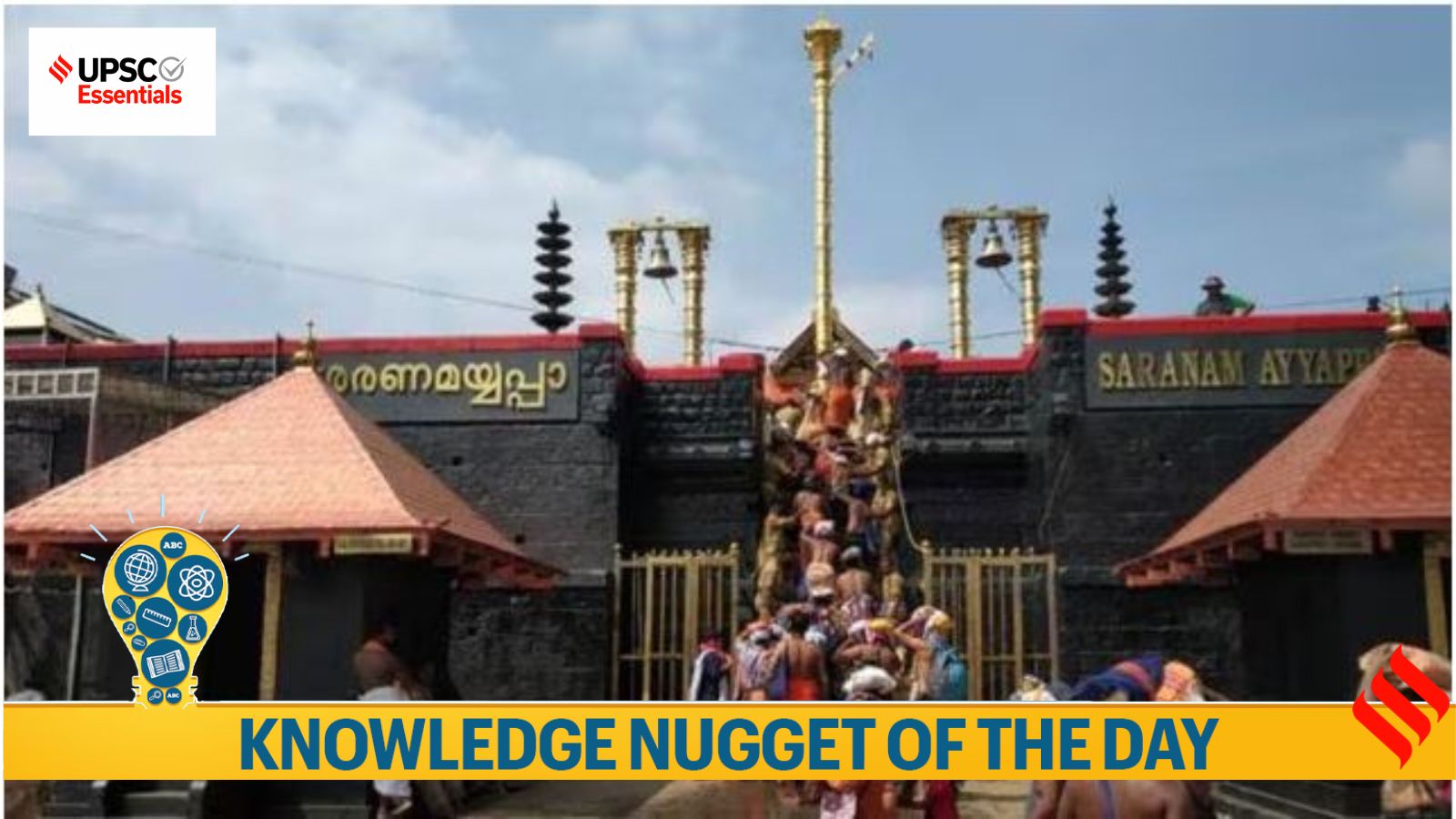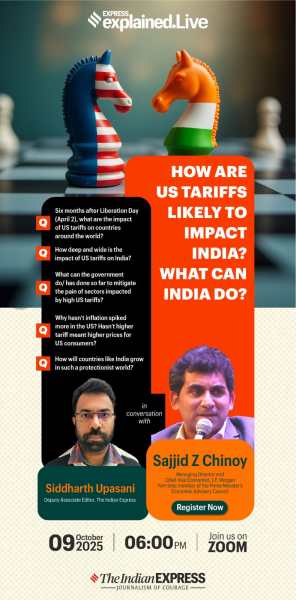
Why in the news?
— Last month, the Kerala High Court initiated suo motu proceedings following a report that the Dwarapalaka idols at the temple were removed and taken to Chennai for a further gold covering, just six years after the previous gold-plating, without prior consent from the court.
— The Court has now expressed concerns regarding the “distinct and grave possibility” that the original gold cladding on the Dwarapalaka idols in the temple was sold and the proceeds misappropriated. The court noted that Unnikrishnan Potty, who in 2019 sponsored a gold-plating of the already gold-cladded Dwarapalaka idols, had expressed his desire to use a “balance of gold” that he had in his possession after the 2019 gold-plating for the purposes of a wedding.
— A Division Bench, which ordered the registration of a crime and investigation led by ADGP (Crime) into the matter, said, “There also appears to be a distinct and grave possibility that the original gold-cladded Dwarapalakas were disposed of to a willing purchaser for a substantial monetary consideration, and that the proceeds thereof were misappropriated by those responsible for the fraud.”
Key takeaways on Sabarimala Temple:
— The Sree Dharma Sastha Temple at Sabarimala, considered one of the prominent pilgrimage sites for people of all religions in India. The shrine of Lord Ayyappa is located atop a hill, 3000 metres above the sea level, at Sabarimala in Pathanamthitta district of Kerala. One has to trek upwards from Pamba, the base of the hill, to reach the temple.
— The temple is located inside the Periyar Tiger Reserve under Ranni forest division. The idol of the deity is made of ‘panchaloha’, alloy from five metals. The main stairway to the temple is known as the ‘pathinettam padi’ (18 sacred steps) crafted out of gold. There are also shrines dedicated to ‘Malikapurathamma’ (goddess) and ‘Vavar Swamy’ (a Muslim warrior believed to be a close confidant of Ayyappa) en route.
Story continues below this ad
— The temple is administered by the Travancore Devaswom Board, an autonomous authority under the state government which manages numerous other Hindu shrines in the state as well. The Thazhamon Madom is identified as the main family of priests who look after the temple.
— The temple at Sabarimala is open to people of all religions. In fact, thousands of devotees who make their way to the temple make it a point to circumambulate a mosque dedicated to Vavar at Erumely. Different stories exist about the close friendship between Lord Ayyappa and Vavar, who is said to have been a warrior. There is also a shrine dedicated to Vavar close to the main temple complex at Sabarimala.
— There is also a Christian connection to the temple. A large number of devotees also visit the Arthunkal church dedicated to St Andrew and St Sebastian at Alappuzha on their way to Sabarimala. At the church, many of them remove the sacred beads they wear around their neck through their 41-day fast. Ponds at the church are cleaned weeks before the annual pilgrimage begins.
— ‘Harivarasanam’, composed originally by KKS Iyer in Sanskrit, is recited mandatorily as a lullaby (urakkupattu) before the sanctum sanctorum closes for the evening every day. A modern and popular version of the composition by G Devarajan and sung by Dr KJ Yesudas is played these days when the temple doors are shut every night.
Story continues below this ad
— The annual pilgrimage to Sabarimala starts on the first day of the Malayalam month of ‘Vrischikam’, which falls on November 17 this year. After 41 days, the temple’s sanctum sanctorum closes on December 26. It re-opens for ‘Makaravilakku’ festival on December 30. The main ‘makaravilakku’ festival usually falls on January 14. This is the period which attracts the most number of pilgrims, especially from the states of Tamil Nadu, Andhra Pradesh, Telangana and Karnataka.
— Apart from the two-month pilgrimage season, the Sabarimala temple remains open for the first five days of every Malayalam month. It also opens for the 10-day annual festival in March and during the state’s main festivals Onam (August-September) and Vishu (April).
— The myth of the presiding deity at Sabarimala:
 Sometime around 903 AD, a branch of the Pandalam family is believed to have settled down in parts of present-day Pathanamthitta, then ruled by the King of Travancore. (Express photo)
Sometime around 903 AD, a branch of the Pandalam family is believed to have settled down in parts of present-day Pathanamthitta, then ruled by the King of Travancore. (Express photo)
It is connected to the Pandalam royal dynasty which had settled in present-day parts of Pathanamthitta after breaking away from the Pandya dynasty. The King and Queen of Pandalam were believed to be childless. The story goes that when the King went hunting one day, he found a crying baby by the side of the river in a forest. Upon inquiring, a sage advised the king to take the baby home and bring him up as his own son, which the King eventually did. The child was named Manikandan and grew up to become the prince of Pandalam.
When Manikandan was 12, the queen of Pandalam developed a sudden illness and the physician treating the Queen recommended tigress’s milk to treat the same. While everyone shied away from the responsibility of bringing tigress’s milk from the forest, Manikandan volunteered to do so. He eventually not only brings the medicine, but himself rides a tigress, accompanied by several cubs, to return to the kingdom. The king, said to have been elated with his adopted son, realises that he is no ordinary child. According to the lore, Manikandan expresses his desire to renounce the kingdom and all material wealth and become an ascetic. The king later builds a shrine for his son, 30 kms away atop a hill that eventually became Sabarimala, where Manikandan acquires a divine form and becomes Ayyappan.
Story continues below this ad
(This above information on myth of Sabarimala is shared for context and may not be important for exam purposes.)
BEYOND THE NUGGET: What was the Sabarimala case of 2018?
 Hyderabad based journalist Kavitha Jakkal and activist Rehna Fathima were not allowed to enter the temple in 2018. (Express Photo by Vignesh Krishnamoorthy)
Hyderabad based journalist Kavitha Jakkal and activist Rehna Fathima were not allowed to enter the temple in 2018. (Express Photo by Vignesh Krishnamoorthy)
— On September 28 (2018), a five-judge Constitution Bench of the Supreme Court delivered a landmark ruling, literally opening doors for women of all ages to offer prayers at the hilltop shrine. The verdict overturned a 1991 Kerala High Court order that barred women pilgrims between the age of 10-50, citing ‘pre-existing and age-old’ traditions at the shrine.
— A group of five women lawyers has challenged Rule 3(b) of the Kerala Hindu Places of Public Worship (Authorisation of Entry) Rules, 1965, which authorises restriction on women “of menstruating age”. They moved the apex court after the Kerala HC upheld the centuries-old restriction, and ruled that only the “tantri (priest)” was empowered to decide on traditions.
— Senior Advocate Indira Jaising, who represented the petitioners, said the restrictions went against Articles 14, 15 and 17 of the Constitution. She argued that the custom is discriminatory in nature and stigmatised women, and that women should be allowed to pray at the place of their choice.
Story continues below this ad
— The temple management has contended in court that they are allowed to frame rules for the shrine without the state’s interference as the Ayyaoppa devotees form a denomination—a body with a definite identifiable character. They also said that it wasn’t discriminatory as the tradition was born from the belief that the deity is a ‘naishtika brahmachari’ (eternal celibate).
— Meanwhile, women devotees who ran the #Readytowait campaign opposed the petition as well. The campaign sprung up in response to #RightToPray. They argued that only women of a certain age are barred from entering the temple and that it is okay to wait till 50 to enter the holy shrine. They also argued that the petitioners were confusing diversity of Hinduism with discrimination.
— While the Kerala government had opposed the entry of women in 2016, it told the SC during the hearing in 2018 that it was in favour of allowing women to pray at the temple. The state government, through its advocate, said it would support the entry of women of all ages to the temple.
— During the hearing, the apex court observed that “what applies to a man applies to a woman” as well and that “once you open it for public, anyone can go”. The bench also said that a “woman’s right to pray was not dependent on any law but it is a Constitutional right”.
Story continues below this ad
“Your (intervener) right to pray being a woman, is equal to that of a man and it is not dependent on a law to enable you to do that,” observed Justice D Y Chandrachud. Justice Nariman had observed that “menstruation is not impure.”
— In 2019, the Supreme Court referred the case back to a larger bench for review. (Poora Premi Sangam Vs. The State of Kerala is still pending.)
Post Read Questions
In which Tiger Reserve is Sabrimala Temple located?
(a) Periyar Tiger Reserve
(b) Annamalai Tiger Reserve
(c) Bandipur Tiger Reserve
(d) None of the above



 Sometime around 903 AD, a branch of the Pandalam family is believed to have settled down in parts of present-day Pathanamthitta, then ruled by the King of Travancore. (Express photo)
Sometime around 903 AD, a branch of the Pandalam family is believed to have settled down in parts of present-day Pathanamthitta, then ruled by the King of Travancore. (Express photo)
































